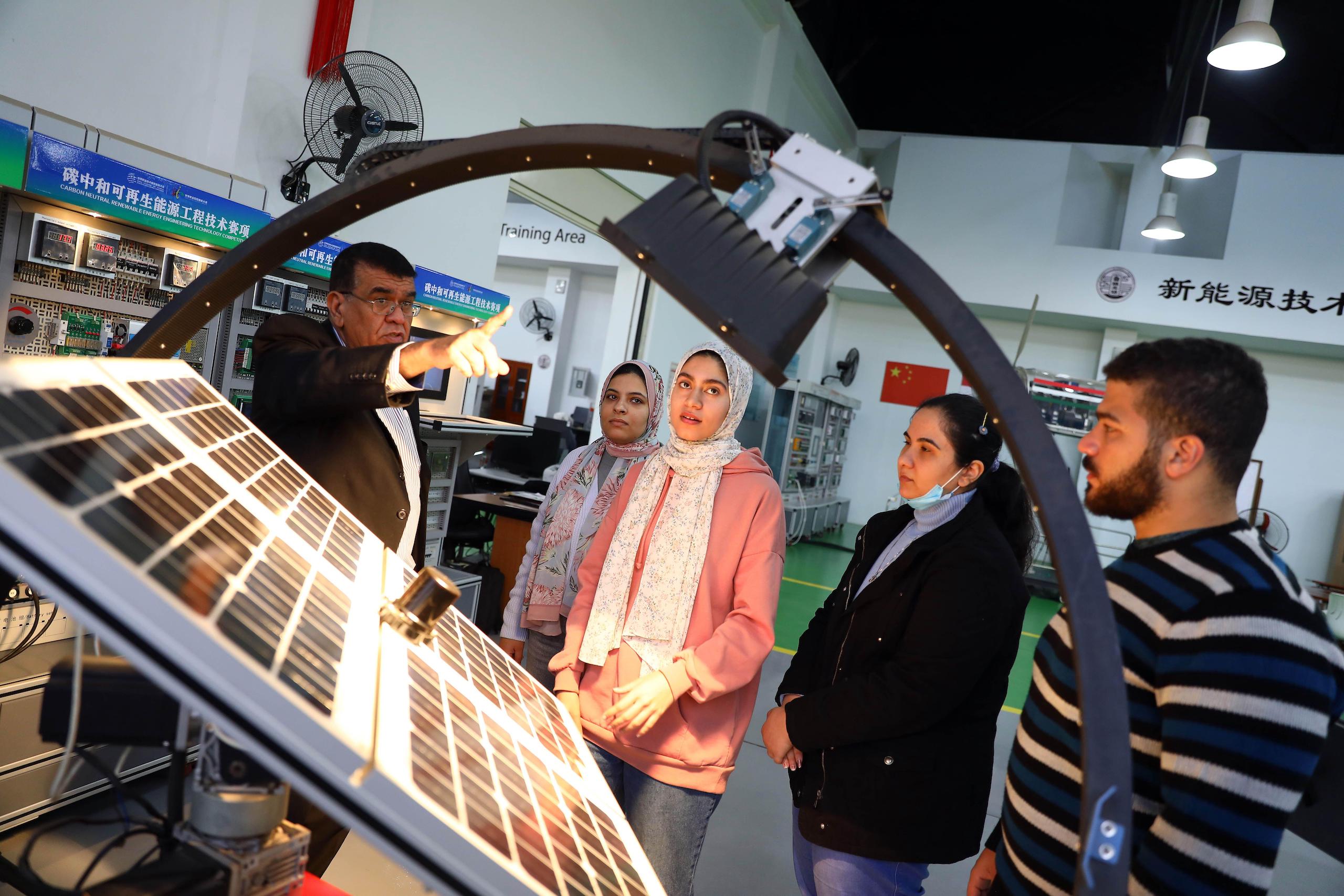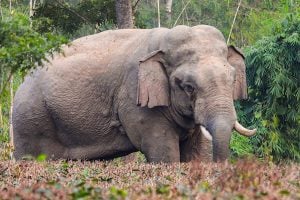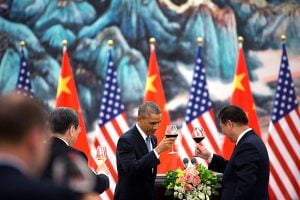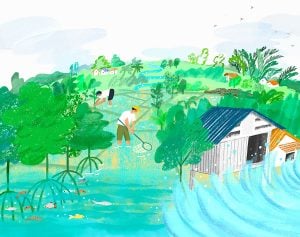China renewed its commitments to Africa this September at the Forum on China-Africa Cooperation (FOCAC) in Beijing. The renewal included endorsing “small and beautiful” livelihood-improving projects and bankrolling sustainable energy projects. The idea of small and beautiful projects has been highlighted by Chinese officials and media since 2019. Referring to smaller and less risky overseas infrastructure projects, it can be seen as a response to financial and environmental problems faced by some larger ones.
However, despite the promising potential of these smaller efforts, Chinese investors are increasingly wary of overseas markets. Heightened regulatory scrutiny and growing risk aversion have pushed up transaction costs. That is, no matter the size of the project, many of the transaction activities stay the same, making limited-scope investments less appealing.
The FOCAC continues to play a pivotal role in shaping China’s investment strategy in Africa, with new pledges aimed at supporting smaller, sustainable projects. The action plan that came out of this year’s forum highlighted financing support for small and medium-sized African enterprises, better leveraging of the role of insurance, and support for local manufacturing capacity.
Beyond FOCAC, the Credit Guarantee and Investment Facility (CGIF) in Southeast Asia offers a potential blueprint for smaller projects in Africa. It provides guarantees for various types of smaller bonds and offers hope for future Chinese-African collaboration on sustainable development projects. These innovative financing mechanisms and targeted incentives can help overcome the barriers to financing smaller projects.
What are ‘small and beautiful’ projects?
The definition of “small and beautiful” projects varies. For a small-scale hydropower plant, the maximum size can range from 10 to 50 megawatts (MW) depending on the criteria used. In the power-generation sector, distributed projects – which generate power near the point of use – may be considered small, while utility-scale projects – which sell power into the electricity grid – are not.
Regardless of the threshold adopted, small and beautiful projects complement the larger-sized projects that China’s collaboration with Africa has focused on in the past. Data shows that after 2013, the average size of a newly China-financed hydropower project in Africa is 402 MW, and 107 MW for solar projects.
More than just about size, small and beautiful projects in the sustainable-energy sector can also reconcile mitigation of greenhouse gas emissions with local environmental and other development goals. A recent article from the World Resources Institute, where we work, noted that being more localised, smaller energy projects can better “meet the dispersed, small-scale electricity needs of rural communities”, powering clean water, agricultural processing, and other opportunities that can generate revenue and improve the welfare of people in rural areas.
Small and beautiful training
Chinese producers have long been providing African countries with equipment and technology for producing goods and services and other income-generating activities. But for the continent’s renewable-energy sector to take off, many more skills and much more experience is needed. Targeted vocational initiatives, which often have a lower investment value than infrastructure projects, can help overcome talent gaps.
Through the Luban Workshop, for instance, the Chinese offer a host of skills training programmes, from assembling and fixing vehicles, to operating heavy machinery. These efforts aim to improve technical and vocational education and training (TVET) initiatives within Africa and other developing countries. In President Xi’s speech at the opening ceremony of FOCAC, he pledged to provide “60,000 training opportunities to Africa, mainly for women and youths”. These efforts can help prepare local talent for the labour market, and address the persistent issues of under- and un-employment.
Aside from political will and government support, Chinese corporations also see the business benefits of Africa’s efforts to boost local talent. For instance, Chinese company Beijing Forever Technology has established the Forever TVET Institute, a vocational school based in Kigali, Rwanda, that has been providing training courses on electricity, construction of infrastructure projects, and operation of heavy machinery since 2018. It is accredited by Rwanda’s Ministry of Education, and graduates receive certificates recognised by local and foreign companies. By expanding their courses to cover low-carbon sectors, these Chinese-funded TVET schools can train thousands of graduates for jobs in sustainable energy, building on Chinese knowledge and equipment that students can practice on.
Small and beautiful electric transportation
Chinese companies in other industries are also intrigued by business opportunities in Africa. Tailing Electric Vehicle, one of China’s top three electric motorcycle and tricycle producers, has manufacturing and assembly plants in Kenya and Rwanda. Horwin, another leading Chinese brand, has joined forces with Spiro, Africa’s largest e-motorbike and scooter provider, to assemble e-bikes and batteries in local factories. These moves are driven by the increasing demand for electric vehicles in Africa to reduce both carbon and local pollutant emissions.
In African cities and regions with insufficient and unstable power supplies, solar-powered-battery swap stations are increasingly recognised as solutions to grow e-motorcycle and tricycle charging networks. We believe that Chinese experience in manufacturing, assembling, and maintaining such charging infrastructure could be leveraged for this.
Incentivising investors
However, currently, Chinese institutional investors – meaning companies or organisations which invest money on behalf of other people – active in Africa do not prioritise investing in small and beautiful projects. Such investors and their regulators are becoming more risk-averse in overseas markets and are placing more scrutiny on potential projects. The relatively higher transaction costs from reviewing and approving smaller projects discourages Chinese investors from taking them on.
Sinosure, China’s policy insurance company, has also lowered its appetite. Smaller projects without financial banking from a larger entity are generally considered more risky.
More targeted incentives are needed to address these barriers. The FOCAC Beijing Action Plan (2025-2027) calls for funding support from the private sector for Africa’s sustainable development. It says “China will give full play to the role of export credit insurance” and increase insurance support for key areas in China-Africa cooperation. By protecting an exporter against the risk of non-payment by a foreign buyer, export credit insurance can help mitigate the risks associated with opportunities in Africa, and leverage more private investment to the continent.
There is precedent for such innovation. In Southeast Asia, China, along with Japan, Korea, and the African Development Bank, has established a Credit Guarantee and Investment Facility (CGIF) to provide credit guarantees for bonds issued by first-time issuers. Many are smaller issuers: the average size of bonds guaranteed by CGIF in 2022 was USD 41 million, approximately half the average size of outstanding corporate bonds. Another design feature of CGIF is that it provides guarantees for local currency-denominated bonds, which can transcend country sovereign ceilings. Given the debt situation in Africa, this feature will be welcomed by African countries.








